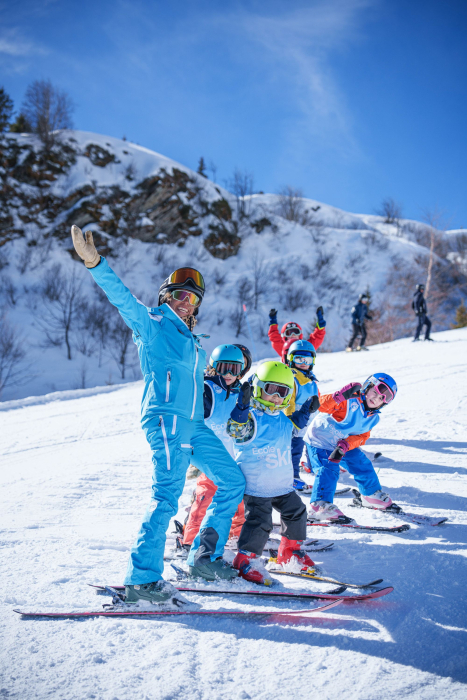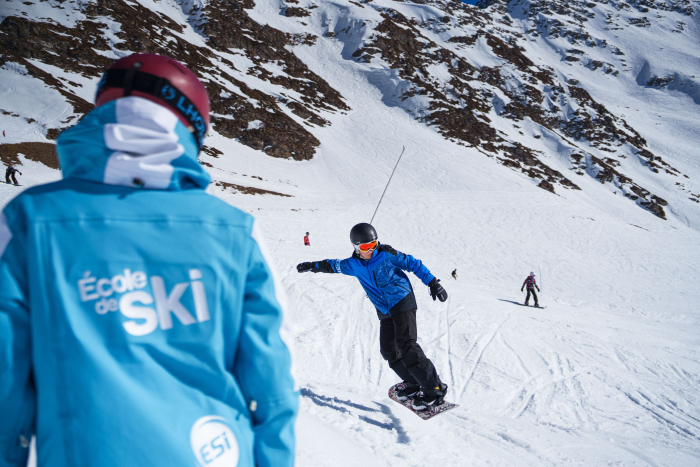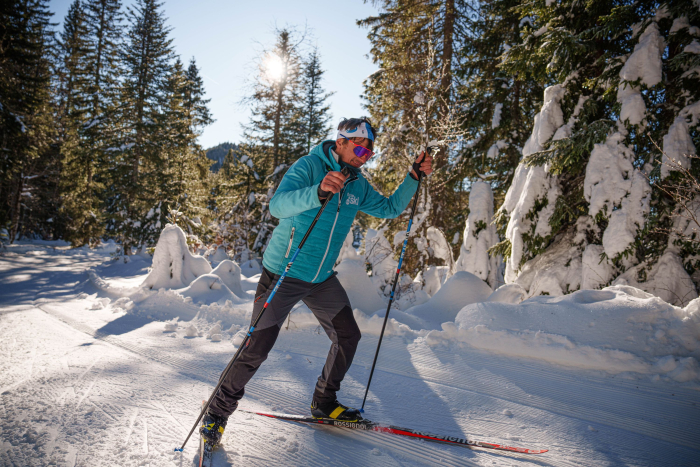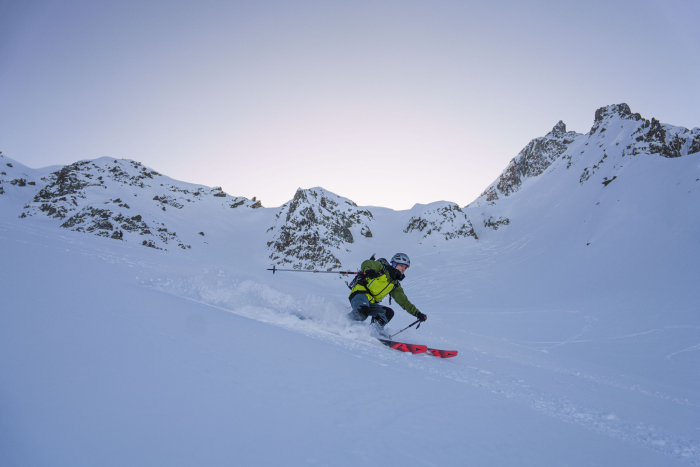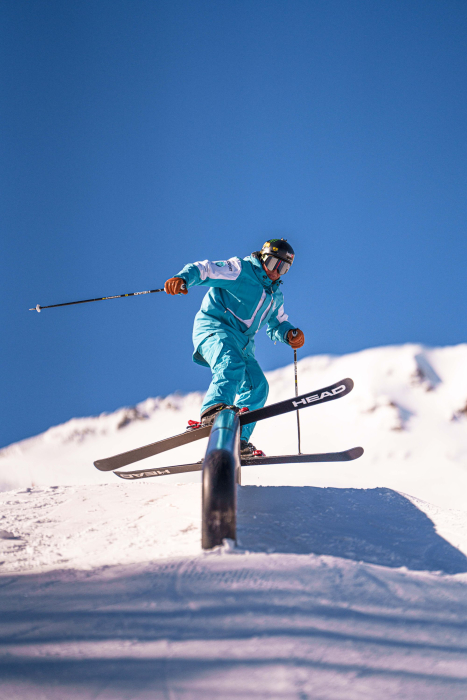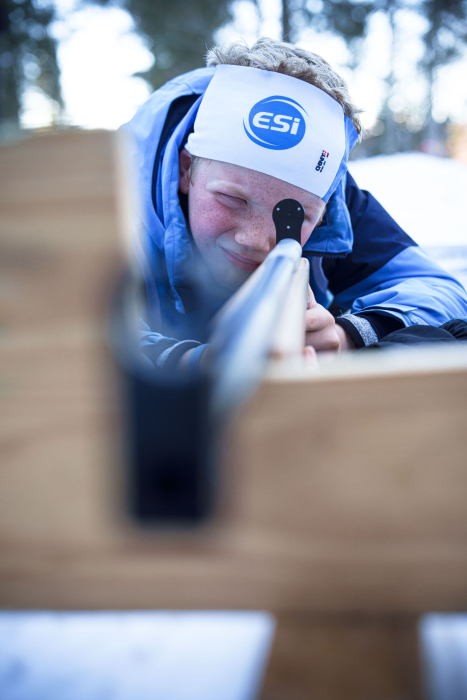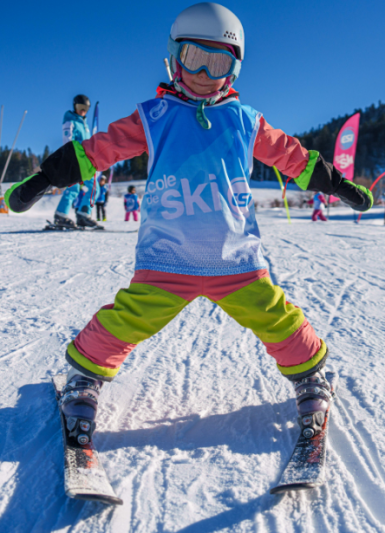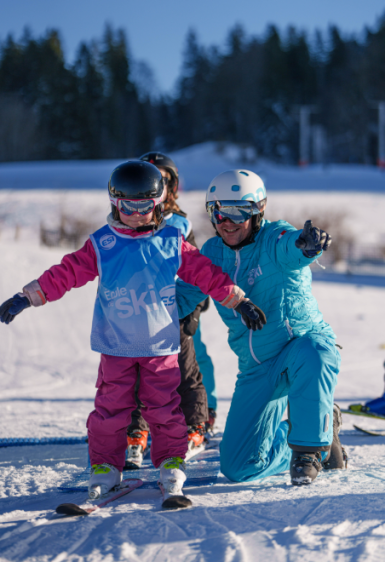Preparing your child for his or her first downhill ski lesson can be an exciting and slightly stressful experience. To ensure that your child's stay in the mountains is a success for the whole family, here are a few tips to help them feel ready and confident:
1. Choose a good ski school and the right course for your child's age and level.
Lessons should be fun, well-designed and at an appropriate pace. Find out about the times and duration that suit you, the number of children per group, the meeting place and the conditions for obtaining the medal (validation of knowledge by an exam at the end of the week or by continuous assessment).
Before you book, take an overall view of your stay. What time of day should I go to class?
Mornings are ideal for early risers. You'll be able to make the first tracks, leaving the afternoon for a nap or other activities.
Lunchtime is perfect for late mornings and late breakfasts. The ski slopes are much less crowded for parents, who take advantage of this time to ski.
Afternoons are great if you want to take your time without skipping lunch. Although the siesta is shorter, some schools offer group lessons in the afternoon, which are less expensive than in the morning, and it's generally less cold.
Which course would you like for your child?
Group lessons are great for having fun with friends while learning, but beware of the number of children per group.
Private lessons are ideal if your child has a special profile or needs special attention from the instructor. This type of lesson is ideal for toddlers who are not sufficiently independent to follow a group lesson.
2. Provide suitable equipment.
Make sure the equipment is comfortable and suited to your child's size and level. Many stores offer rental services, with experts on hand to help you make the right choice. Helmets are essential for your child's safety. Most ski schools make them compulsory.
Your child should wear thermal clothing and a waterproof ski suit. Properly protected, he can ski in all weathers. Mittens are preferable to gloves for warmth, and goggles to helmets for comfort and optimum eye protection. Note that not all masks offer good sun protection. A neck warmer is also a must: children quickly get cold from the back of their necks. In bad weather, it can be pulled up under the helmet.
3. Explain what he's going to experience.
Before the big day, talk to him about what he can expect: arriving at the resort, getting to grips with the equipment for the first time, meeting his friends and ski instructor. Show him where he'll be skiing for the first time, and why not a few videos of beginners skiing to give him a visual idea of what he'll be learning. First experiences can be a little intimidating. Encourage him to stay calm and remind him that falling is part of the learning process. Emphasize the fun side of skiing: the sensations, the scenery, the games, the fact of sliding and having a good time with other children before being able to accompany you on the slopes.
4. The first day of lessons is the most important.
Arrive early to avoid stress. Give your child some time to get used to the environment before joining the group.
Encourage him, let him take his time, but once he's with his instructor, stay out of his way - he's in good hands!
Don't forget a snack and water. There are flexible mini water bottles that fit in pockets. The reuse of compote bottles, for example, is perfect for this purpose. Drinking is essential (sun, cold, wind and altitude accelerate dehydration).
Never forget your sun cream! UV rays in the mountains are dangerous for their fine skin, and even if the sun isn't shining, they're still there!
Above all, be cool and relaxed yourself. This will help them feel confident and ready to explore the slopes with pleasure.
![ESI [Hiver]](/build/assets/images/logo_esi-winter.513260dd..png)
